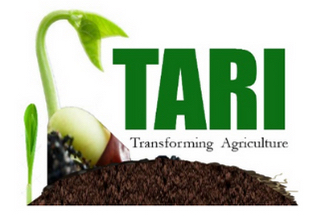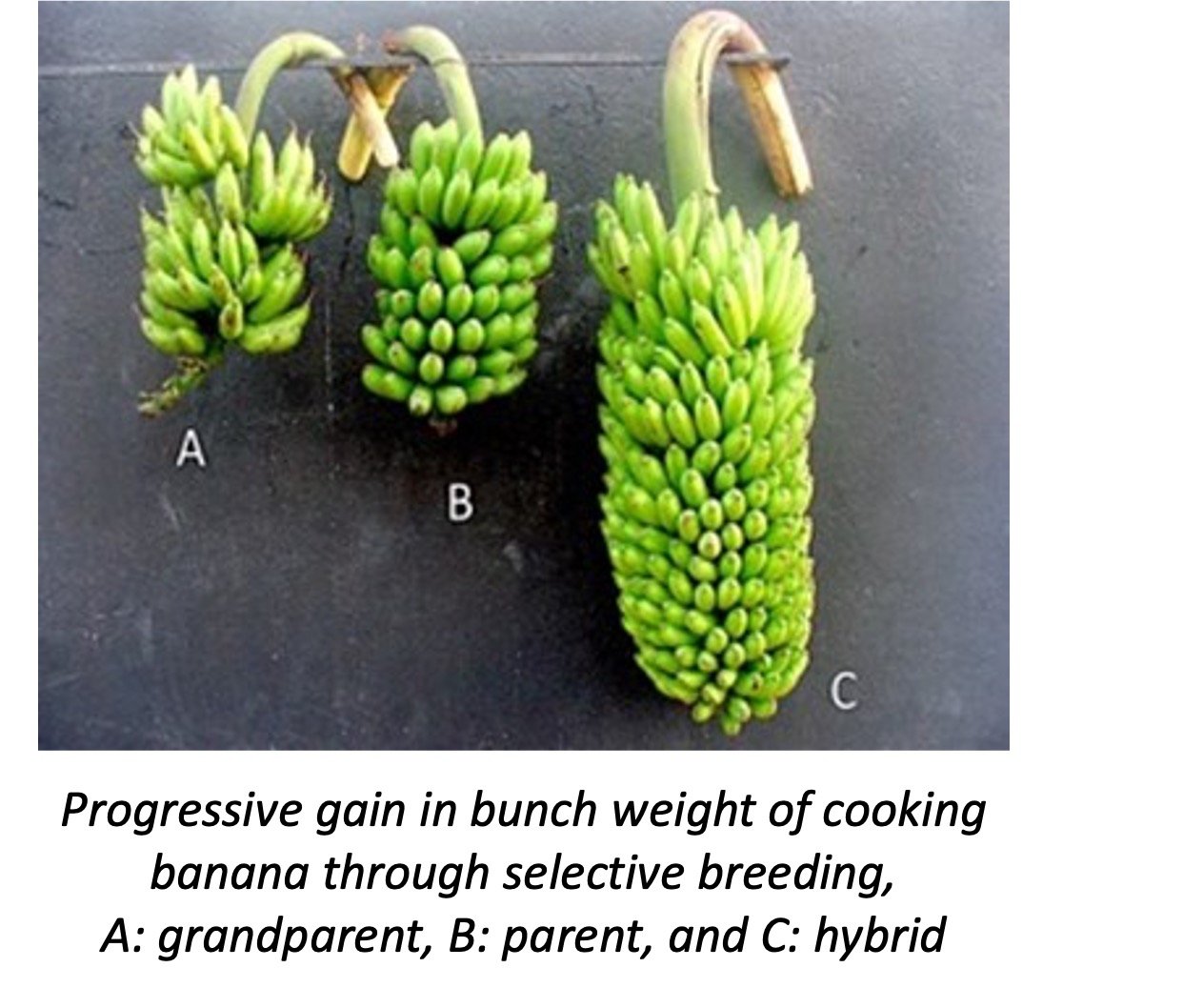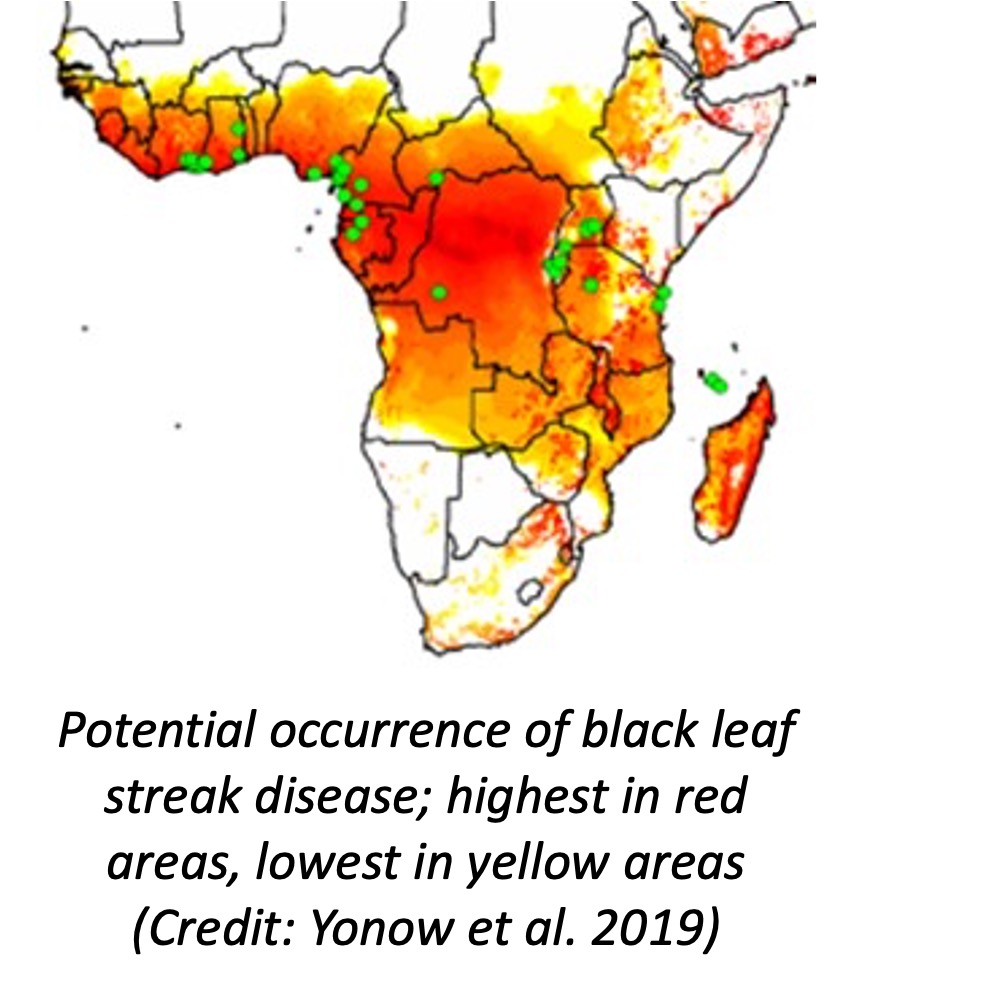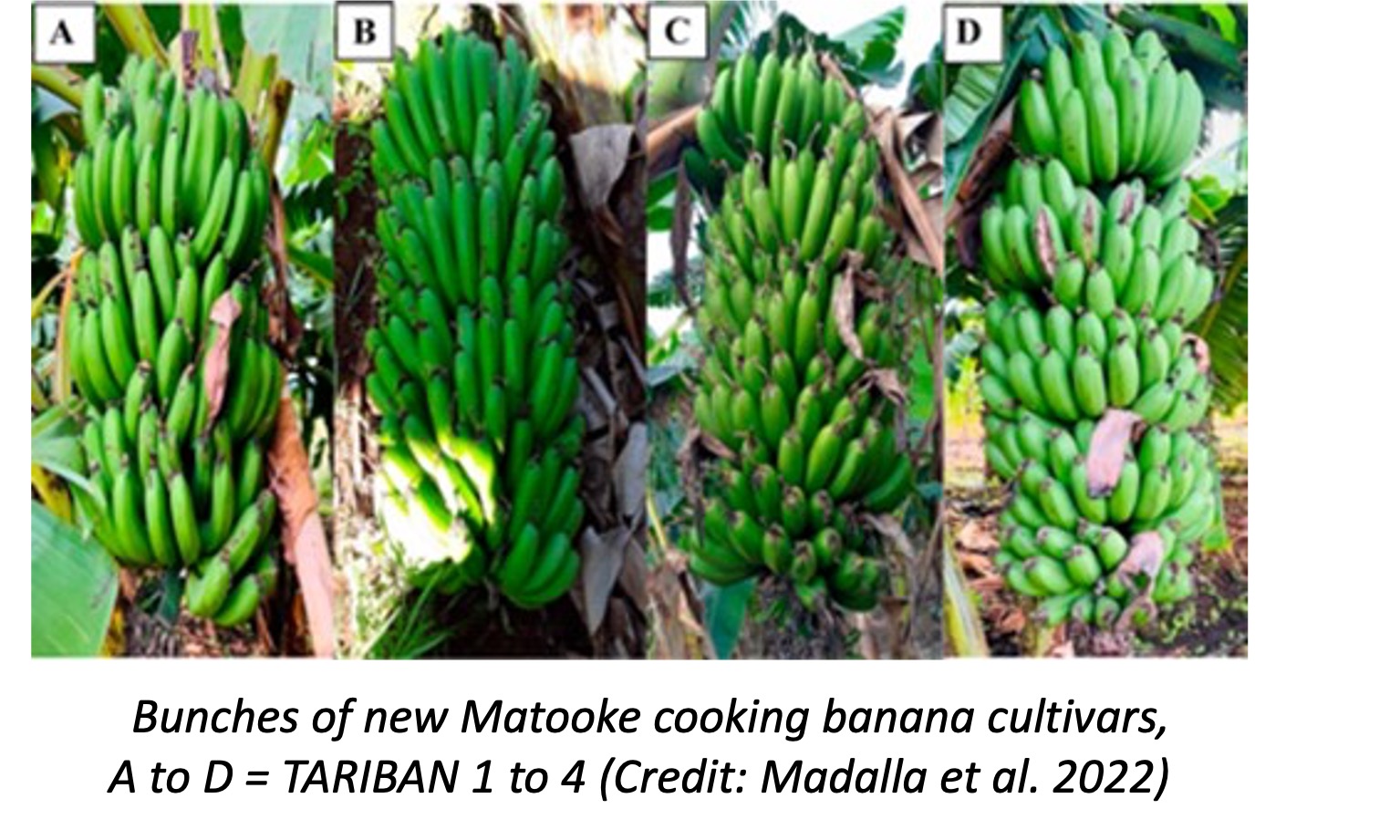Improved Varieties of Banana for the African Highlands
Résumé
Production of bananas in the Great Lakes region has stagnated. For example in Uganda, yields are as low as 5 30 t ha-1 year-1 compared to a potential 70 t. Banana bunch weights have dropped from 60 kg to 10 kg or even less. In large part this is because traditionally cultivated varieties of the East African Highland bananas are susceptible to several pests and diseases. Declining soil fertility and drought further undermine production. Low banana yields result in food shortages that place dependent communities at risk of hunger. Introduction of high-yielding, disease resistant hybrids forms an integral part of technology packages to improve productivity. Through conventionally breeding, a range of improved varieties were developed that are less susceptible to black leaf streak and resistant to nematodes and bunchy top disease. Cultivating improved varieties reduces the risk of die-off in plantations.
En savoir plus sur la solution
Breeding pipelines for cooking banana is enhanced as more high yielding and pest and disease resistant hybrids become available. Early field evaluation processes are accelerated by improving pollination and increasing the number of crosses made. A major breakthrough is the ‘NARITA’ hybrid line obtained by crossing the East African Highland Banana (EAHB, AAA group) with a wild variety (Calcutta 4, AA group). Hybrids are then selected for culinary quality, color, aroma, taste, mouthfeel, and texture. Building upon the NARITA success, the Tanzania Official Seed Certification Institute has registered four Tariban cooking banana hybrids.
The recommended hybrid varieties in Tanzania are TARIBAN1 through 4. Clean swords of these varieties are available from the Tanzania Agriculture Research Institute. Tissue culture plantlets are available from designated private laboratories in Tanzania. In Uganda, the National Banana Research Program of NARO in Kawanda maintains hybrid cooking banana varieties at on-station fields. They are accessible through NARO and domestic private enterprises. In Rwanda, evaluations show that NARITA hybrid and Mpologoma perform well at sites with varying altitude, soil fertility and rainfall. In DR Congo, traditional cultivars of cooking banana dominate but hybrid lines derived from NARITA are undergoing field evaluation.
Improved hybrid varieties have a compact bunch with more fruit, as well as heavier and larger fruit than traditional cultivars. Tall banana plants are normally vulnerable to wind damage but TARIBAN2 is particularly sturdy. The TARIBAN cultivars produce pronounced swords and few suckers except for TARIBAN3.
Conventional breeding of banana involves the crossing of edible varieties with wild seeded bananas. New molecular techniques assist in this approach. Resistance against nematodes is acquired by inserting foreign genes through a bacterial vector. Early field evaluation consists of monitoring single plants among large populations of hybrids, while preliminary yield trials assess entire rows of clonal hybrids. Climate and soil conditions have strong influences on the suitability of varieties so performance evaluation of banana hybrids must be done at multiple contrasting locations to ascertain performance, adaptability, and stability. This way specific or broadly adapted cultivars can be selected and commercially multiplied. Trials conducted over two production cycles provide reliable information at reduced costs. For example, TARIBAN varieties have been developed by testing of 27 hybrids in three sites over four. The final selection of prospective “Matooke” hybrids is guided by a product profile that includes host plant resistance to BLS, culinary acceptability, and bunch weight significantly higher than the standard local check. For obtaining satisfactory production, clean planting materials must be used alongside with balanced nutrient inputs and optimal spacing and stand management.
Commercialisation
Disponible dans le commerce
Images de la Solution
Institutions




